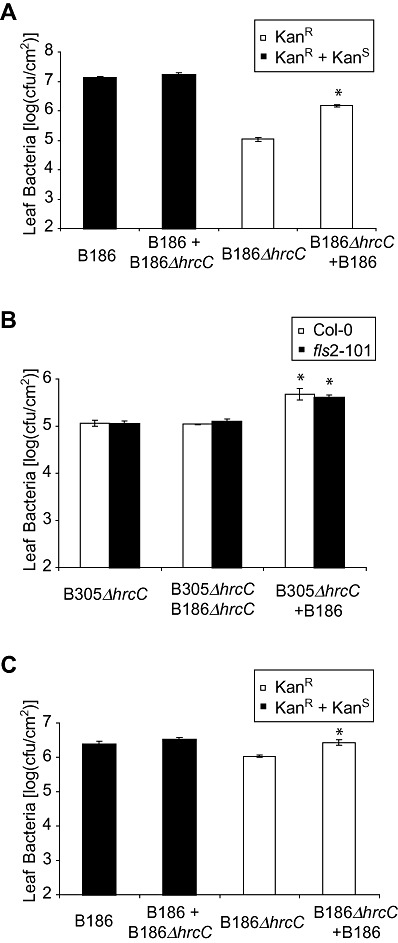Figure 6.

Co‐inoculation of Arabidopsis with wild‐type (WT) Xanthomonas campestris pv. campestris (Xcc) B186 promotes the in planta growth of Xcc ΔhrcC strains. x‐axis labels denote bacteria that were applied to the plant; data are means ± standard error. *Significant difference between population sizes of the first stain listed in the presence/absence of the second strain listed (t‐test, P < 0.05). In (A) and (C), open bars show the main result (leaf population of Xcc ΔhrcC strain carrying a KanR plasmid in the absence or presence of co‐inoculated WT Xcc B186), and filled bars show control data (leaf population of all KanS and/or KanR Xcc bacteria). (A) Leaf population of B186ΔhrcC 3 days after mix‐inoculation [at an optical density at 600 nm (OD600) = 0.0005, low cell density] with WT B186 (at OD600= 0.005, high cell density). (B) Leaf population of B305ΔhrcC 3 days after mix‐inoculation (at OD600= 0.0005, low cell density) with WT B186 or B186ΔhrcC (inoculated at OD600= 0.005, high cell density). In (B), open bars show data for growth in WT Arabidopsis Col‐0 and filled bars show data for a Col‐0 fls2 – mutant. (C) Leaf population of B186ΔhrcC 3 days after mix‐inoculation (at OD600= 0.005, high cell density) with WT B186 (at OD600= 0.0005, low cell density). cfu, colony‐forming units.
